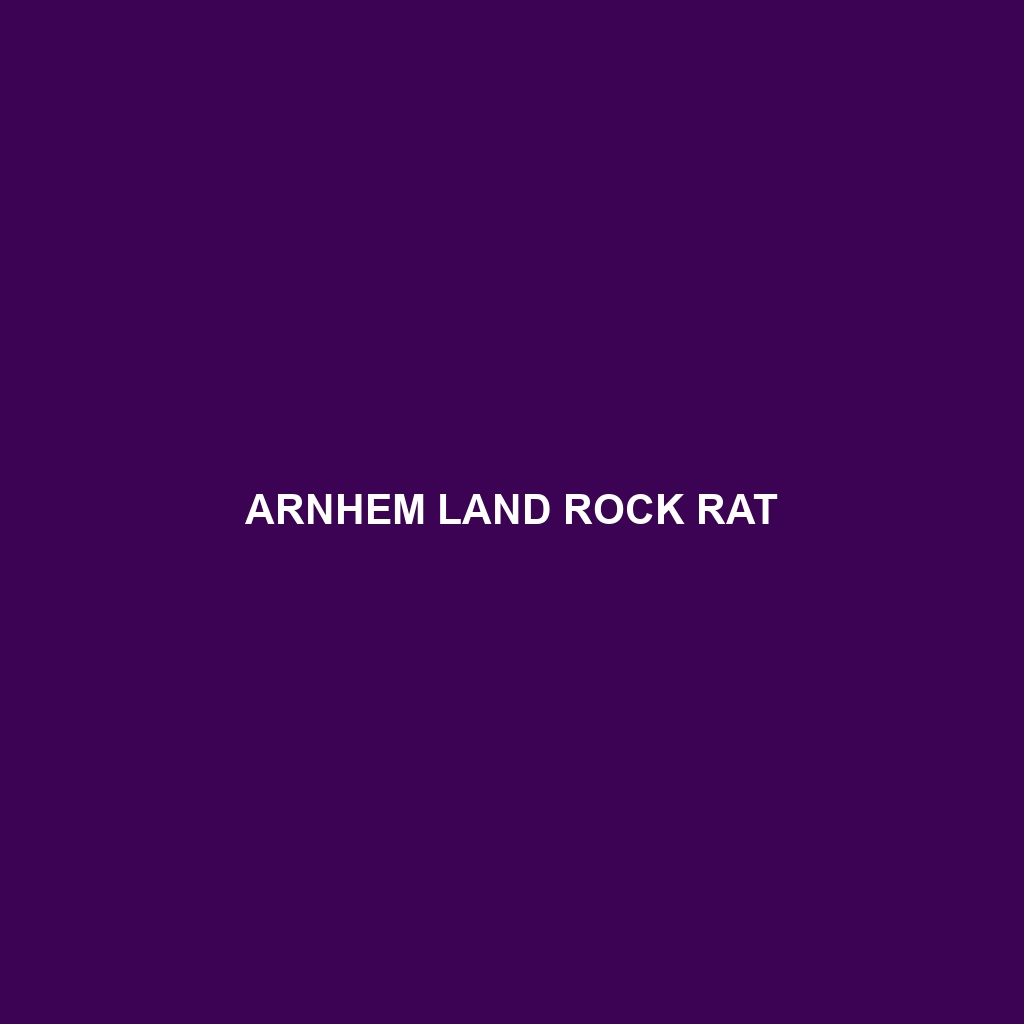Common Name: Arnhem Land Rock Rat
Scientific Name:
Habitat:
The Arnhem Land Rock Rat is primarily found in the rugged and remote regions of Arnhem Land, located in the northern part of the Northern Territory, Australia. This species thrives in a variety of habitats, including tropical savannas, open woodlands, and rocky outcrops. Preferring areas with dense vegetation, it often inhabits regions near water sources, which provide vital resources for its survival.
Physical Characteristics:
The Arnhem Land Rock Rat is a medium-sized rodent, measuring approximately 25 to 30 centimeters in length, not including its tufted tail. They are characterized by a dense, soft fur that ranges in color from grayish-brown to reddish-brown, which helps them blend with their natural surroundings. Notable features include large eyes adapted for low-light conditions, and strong hind limbs that allow agile movement across rocky terrain.
Behavior:
Arnhem Land Rock Rats are primarily nocturnal, exhibiting active behavior during the night while foraging for food. They are known for their climbing abilities, often seen navigating trees and shrubs in search of shelter and food. Socially, they are somewhat solitary, but may form small groups during mating season or in areas with abundant food resources. Their communication includes a range of vocalizations and scent markings.
Diet:
This species primarily feeds on fruits, seeds, and leaves, showcasing a preference for native plants. The Arnhem Land Rock Rat’s diet is diverse and seasonally varied, often including fungi and insects, which provide necessary nutrients. Their foraging habits play a crucial role in seed dispersal within their habitat, contributing to the health of the ecosystem.
Reproduction:
The reproductive habits of the Arnhem Land Rock Rat involve breeding during the wet season, typically from November to March. Females give birth to a litter of 2 to 4 offspring after a gestation period of about 30 days. The young are dependent on their mother for several weeks and begin to venture out and learn foraging skills as they grow.
Conservation Status:
The Arnhem Land Rock Rat is currently listed as vulnerable due to habitat loss and environmental changes. Conservation efforts are underway to protect its natural habitat and ensure the survival of this unique species, which is pivotal to the ecosystem’s balance.
Interesting Facts:
One fascinating fact about the Arnhem Land Rock Rat is its exceptional ability to camouflage itself among the rocky outcrops and vegetation of its habitat, making it difficult for predators to spot. Additionally, it is one of the few rodent species that can leap between branches with remarkable agility.
Role in Ecosystem:
The Arnhem Land Rock Rat plays a significant role in its ecosystem as both a seed disperser and a prey species for larger predators. By consuming various plants and fruits, it aids in plant propagation, while providing a food source for animals higher up in the food chain, thus maintaining ecological balance.
